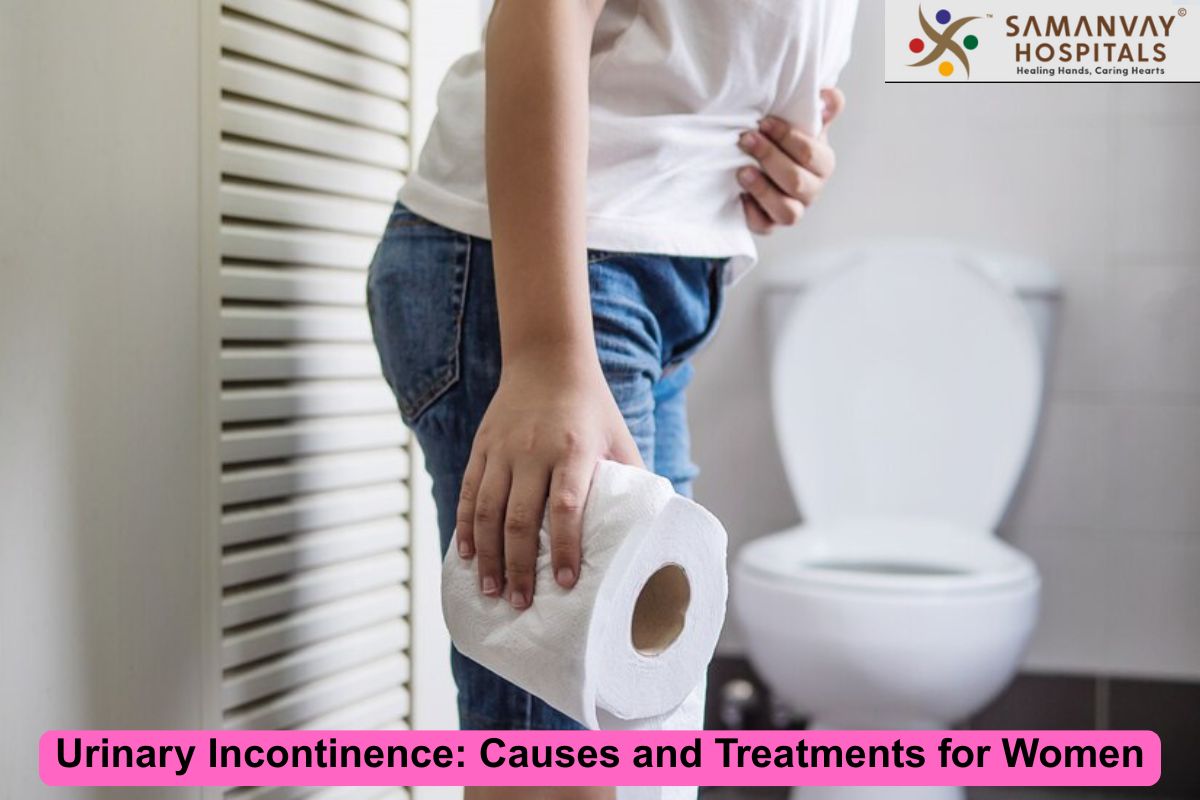
Urinary incontinence is a problem that strikes most women. Urinary incontinence is the loss of urine when there should not be any urine present. It is embarrassing and takes away from the quality of the woman’s life. However, it is important to know the cause and how one can treat urinary incontinence. If you are experiencing a difficulty with urinary incontinence, you do not have to suffer in silence. A doctor’s visit can work miracles. In this blog, here, the causes of urinary incontinence and its treatments in women will be discussed.
What is Urinary Incontinence?
Urinary incontinence occurs when a person is unable to manage the bladder. This results in leakage of urine at the wrong times. It is more common in women than men, especially as women age. There are different types of urinary incontinence, and each has different causes.
Causes of Urinary Incontinence in Women
There are numerous reasons why women suffer from urinary incontinence. Pregnancy is among the most common causes of incontinence. When a woman is pregnant, the expanding uterus can put pressure on the bladder. This makes the muscles controlling the bladder stretch and weaken. Childbirth also makes the muscles and nerves of the pelvis expand, and this results in incontinence.
Furthermore, hormonal changes during menopause may also affect bladder control. As estrogen levels drop, the bladder muscles can be weakened. Obesity also places added pressure on the bladder, which can result in potential incontinence. Weakening muscles of the pelvic floor can also cause incontinence as a result of surgery in the pelvis in women.
Certain medical illnesses such as diabetes or urinary tract infections are also the causative agents of urinary incontinence. They make the patient urinate more often and thus have difficulty in holding urine. Moreover, certain neurological conditions such as stroke or multiple sclerosis can also disrupt the nervous system that manages the bladder.
Types of Urinary Incontinence
There are specific types of urinary incontinence with characteristic signs.
- Stress Incontinence: It occurs when physical pressure, like coughing, laughing, or exercise, squeezes the bladder. It is the most common type among women.
- Urge Incontinence: Women with urge incontinence experience an urgent and compelling need to urinate. It is followed by involuntary leakage.
- Overflow Incontinence: The bladder never empties in this case. This causes leakage of urine even without an urge to pass urine.
- Functional Incontinence: An illness or injury keeps a woman from being able to make it to the bathroom on time.
Treatment of Urinary Incontinence
The silver lining is that urinary incontinence is curable. Various treatments exist based on the nature and cause of incontinence. But all this begins by consulting a health care provider to have it properly diagnosed.
Lifestyle Modifications and Exercises
Lifestyle change is one of the first lines of treatment for urinary incontinence. It can include restriction of alcohol and caffeine intake because these have been shown to irritate the bladder. Weight loss also decreases pressure on the bladder. Pelvic floor exercises or Kegel exercises, help tighten muscles that control urination. Regular exercise also improves bladder control overall.
Medications
For women with urge incontinence, bladder relaxing drugs may be prescribed. These drugs can dissolve the sudden urge to urinate. One must consult a physician before taking medication.
Physical Therapy
Another kind of treatment of women with urinary incontinence is physical therapy. Women may be taught by a pelvic floor therapist how to contract and develop the pelvic floor muscles. Physical therapy can be helpful in controlling the bladder as well as the prevention of leakage.
Surgical Options
In severe cases, other treatments have failed, and surgery may be needed. Sling surgery or bladder neck suspension might suit women with severe incontinence. Surgery can yield a long-term cure but is generally reserved when other options are attempted.
Medical Devices
Some women are helped by medical devices controlling incontinence. For instance, a pessary is an appliance inserted inside the vagina to support the bladder. Electrical devices that deliver impulses to nerves are also used to stimulate bladder function.
Alternative Treatments
Some women can utilize alternative therapies like acupuncture or herbal medicine. However, one needs to seek a health practitioner before using such treatment.
When to See a Doctor?
If you experience urinary incontinence symptoms, you should consult a doctor. Your doctor will be able to determine the cause of it and suggest a treatment. When looking for a doctor, you might find a doctor clinic near me that would refer you to a specialist residing in your area. If you do not know where to begin, a ladies doctor near me will ensure that you can visit a women’s health expert. However, if incontinence is weak, a urologist near by me will be able to offer professional treatment.
Conclusion
Urinary incontinence is a disease that is prevalent and treatable in women. Knowing what causes incontinence and the various types will help you get proper treatment. Additionally, treatment comes in the form of lifestyle modification to surgeries. If you are looking for professional guidance, looking for the best hospitals in Baroda or your local clinics may give you a list of trusted professionals. Therefore, do not hesitate to see a physician if you observe the symptoms of urinary incontinence. After taking the right treatment, you can take control and improve your life.







